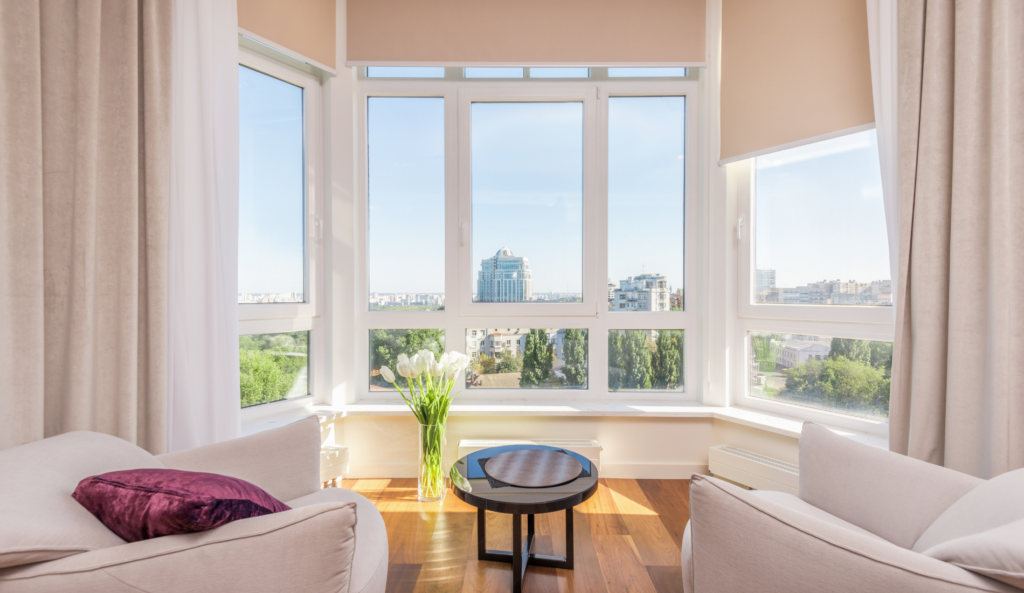When it comes to choosing paint colors for your home, lighting plays a crucial role in how those colors will appear. Both natural and artificial light sources can significantly impact the way paint colors look, making it essential to understand their effects. In this blog post, we will explore the role of light and how natural and artificial light can affect paint colors.
Understanding Color Temperature
To comprehend how light affects paint colors, we must first understand color temperature. Color temperature refers to the warmth or coolness of a light source, which is measured in degrees Kelvin (K). Different light sources emit light at various color temperatures, ranging from warm to cool.
- Warm Light: Warm light sources have lower color temperatures, typically ranging from 2000K to 3000K. These lights emit a yellowish or reddish glow, similar to the light produced by candles or incandescent bulbs.
- Cool Light: Cool light sources have higher color temperatures, usually ranging from 4000K to 6500K. These lights emit a bluish or whitish hue, resembling natural daylight or fluorescent bulbs.
Now, let’s delve into how both natural and artificial light sources can affect the perception of paint colors.
Natural Light
Natural light is an excellent way to showcase the true colors of your paint. However, it’s important to consider that natural light changes throughout the day, affecting the appearance of your chosen colors.
Direct Sunlight: Direct sunlight can be intense and may wash out certain paint colors, making them appear brighter or more vibrant. It’s advisable to choose slightly darker or richer tones when painting rooms that receive ample direct sunlight.
Morning and Evening Light: During the morning and evening hours, natural light tends to have a warmer, golden hue. This warm light can make colors appear cozier and more vibrant. Choosing warm-toned colors can enhance the ambiance of rooms that receive morning or evening light.
North-Facing Rooms: North-facing rooms receive cooler, indirect light throughout the day. These rooms may benefit from lighter and cooler colors, as they can help brighten the space and counterbalance the lack of direct sunlight.
Artificial Light
Artificial light sources, such as incandescent, fluorescent, and LED bulbs, can also influence the perception of paint colors. Different types of artificial light have varying color temperatures, which affect how colors are rendered.
Incandescent Light: Incandescent bulbs emit a warm, yellowish light similar to candlelight. This warm light can make cool-toned colors appear duller, while warm-toned colors become more pronounced. If you use incandescent bulbs, consider selecting warmer paint colors to create a balanced look.
Fluorescent Light: Fluorescent lighting tends to produce cooler, bluish tones. This cool light can enhance cool-toned paint colors, making them appear brighter and more intense. However, it can make warm-toned colors appear less vibrant. When using fluorescent lighting, opt for cooler paint colors or be aware that warm tones may not appear as intended.
LED Light: LED bulbs come in various color temperatures, allowing you to select the desired warmth or coolness for your space. They are available in both warm white and cool white options. Choose LED bulbs with color temperatures that align with the paint colors you’ve selected to ensure accurate color representation.
Testing Paint Colors under Different Lighting
To ensure you are happy with your paint color choices, it’s crucial to test them under different lighting conditions. Here are some tips for testing:
- Observe Natural Light: Paint swatches on different walls in the room you plan to paint and observe them at various times of the day to see how the natural light affects the colors.
- Test with Artificial Light: Place paint swatches under the different artificial light sources you have in the room to see how they interact with the colors.
- Use Sample Paint Cans: Purchase small sample cans of your chosen paint colors and apply them to a section of the wall. Observe the colors throughout the day under different lighting conditions.
By testing paint colors in multiple lighting situations, you can make an informed decision and ensure that your chosen colors will look as intended.
Conclusion
Lighting has a significant impact on how paint colors appear in a space. Understanding the role of natural and artificial light, as well as color temperature, is crucial for achieving the desired look and ambiance in your home. By considering these factors and testing paint colors under different lighting conditions, you can confidently choose colors that will enhance your space and create the atmosphere you desire.
if you are looking for a professional painting team to help with a project look no further. Contact Cova Painting for a free estimate on your next project
Sources: How Lighting Affects Interior Colors


